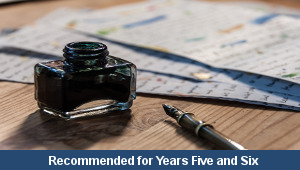Lesson Four – Gadget Inventions

This science teaching pack for Key Stage Two gets the children to practise planning and producing a class presentation to demonstrate how to use mechanical advantages for levers, pulleys or gears to solve a problem.
The class can illustrate and record how to either use levers, pulleys or gears to design an invention to use in school or at home such as washing some dirty dishes or clearing away toys.
Download this teaching pack including a lesson plan, classroom activities and an interactive presentation to practise planning and producing a class presentation to demonstrate how to use mechanical advantages for levers, pulleys or gears to solve a problem
Activities in this teaching pack include display posters to suggest how to solve problems using a combination of levers, pulleys and gears and a template to identify and record how to either use levers, pulleys and gears to solve a problem for a mechanical advantage.
The interactive presentation can be used to explore how to produce a class presentation to demonstrate how to use mechanical advantages to solve a problem.
This lesson is part of a science scheme of work to get the children to research, test and illustrate how to use different types of levers, pulleys and gears to change the direction and strength of a range of forces. There are teaching activities for shared learning, differentiated worksheets to support independent learning and interactive presentations to introduce concepts and key skills.
-

Maths Arithmetic Assessment
Assess abilities in solving arithmetic number problems for addition, subtraction, multiplication and division when working with informal and formal written calculations
-

Environment
Identify and describe some of the special landscapes and locations that can be found in the world and reflect on how they can be protected and preserved for the future
-

Silent Letter Words
Explore and illustrate the meanings and spellings of some different words with silent letters when using them in a range of topics and scenarios
-

Complaint Letters
Explain and model how to format and structure writing when composing letters of complaint about different issues and scenarios
